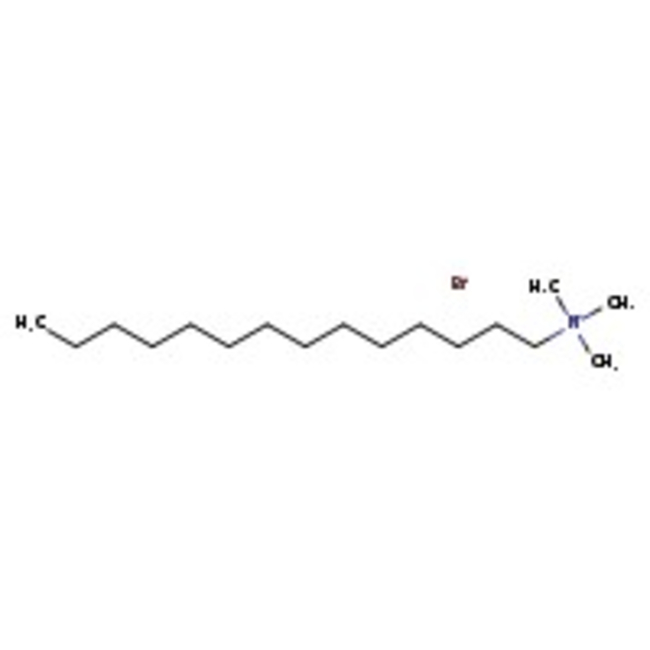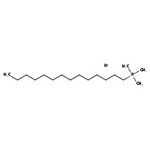Search Thermo Fisher Scientific
Thermo Scientific Chemicals
(1-Tetradecyl)trimethylammonium bromide, 98%
CAS: 1119-97-7 | C17H38BrN | 336.40 g/mol
Catalog number ALFL10294.36
View Price:Sign InSign in to see your account pricing. Need an account? Register with us today.
Quantity:
500 g
Specifications
Chemical Name or Material(1-Tetradecyl)trimethylammonium bromide
CAS1119-97-7
Health Hazard 1H314-H335
Health Hazard 2GHS H Statement
H314-H318
Causes severe skin burns and eye damage.
Causes serious eye damage.
H314-H318
Causes severe skin burns and eye damage.
Causes serious eye damage.
Health Hazard 3P260-P264b-P271-P280-P301+P330+P331-P303+P361+P353-P304+P340-P305+P351+P338-P310-P363-P501c
View more
Myristyltrimethylammonium has been used in a study to assess a surfactant-controlled synthetic method to obtain a nanophase of mesoporous ceria-zirconia solid solution containing cationic defects in the crystalline structure. It has also been used in a study to determine the low molecular weight of organic acids in soils and plants by capillary zone electrophoresis.
This Thermo Scientific Chemicals brand product was originally part of the Alfa Aesar product portfolio. Some documentation and label information may refer to the legacy brand. The original Alfa Aesar product / item code or SKU reference has not changed as a part of the brand transition to Thermo Scientific Chemicals.
Applications
Myristyltrimethylammonium has been used in a study to assess a surfactant-controlled synthetic method to obtain a nanophase of mesoporous ceria-zirconia solid solution containing cationic defects in the crystalline structure. It has also been used in a study to determine the low molecular weight of organic acids in soils and plants by capillary zone electrophoresis.
Solubility
Soluble in water. (100 g/L)
Notes
Light sensitive. Store in cool dry condition. Incompatible with strong oxidizing agents. Ensure ventilation.
Myristyltrimethylammonium has been used in a study to assess a surfactant-controlled synthetic method to obtain a nanophase of mesoporous ceria-zirconia solid solution containing cationic defects in the crystalline structure. It has also been used in a study to determine the low molecular weight of organic acids in soils and plants by capillary zone electrophoresis.
Solubility
Soluble in water. (100 g/L)
Notes
Light sensitive. Store in cool dry condition. Incompatible with strong oxidizing agents. Ensure ventilation.
RUO – Research Use Only
General References:
- K-P. Wilhelm.; B. Böttjer.; C-P. Siegers. Quantitative assessment of primary skin irritants in vitro in a cytotoxicity model: comparison with in vivo human irritation tests.British Journal of Dermatology. 2001, 145 (5),709-715 .
- D. Huang.; Y.J. Wang.; Y.C. Cui.; G.S. Luo. Direct synthesis of mesoporous TiO2 and its catalytic performance in DBT oxidative desulfurization.Microporous Mesoporous Mater. 2008, 116 (1-3),378-385 .



